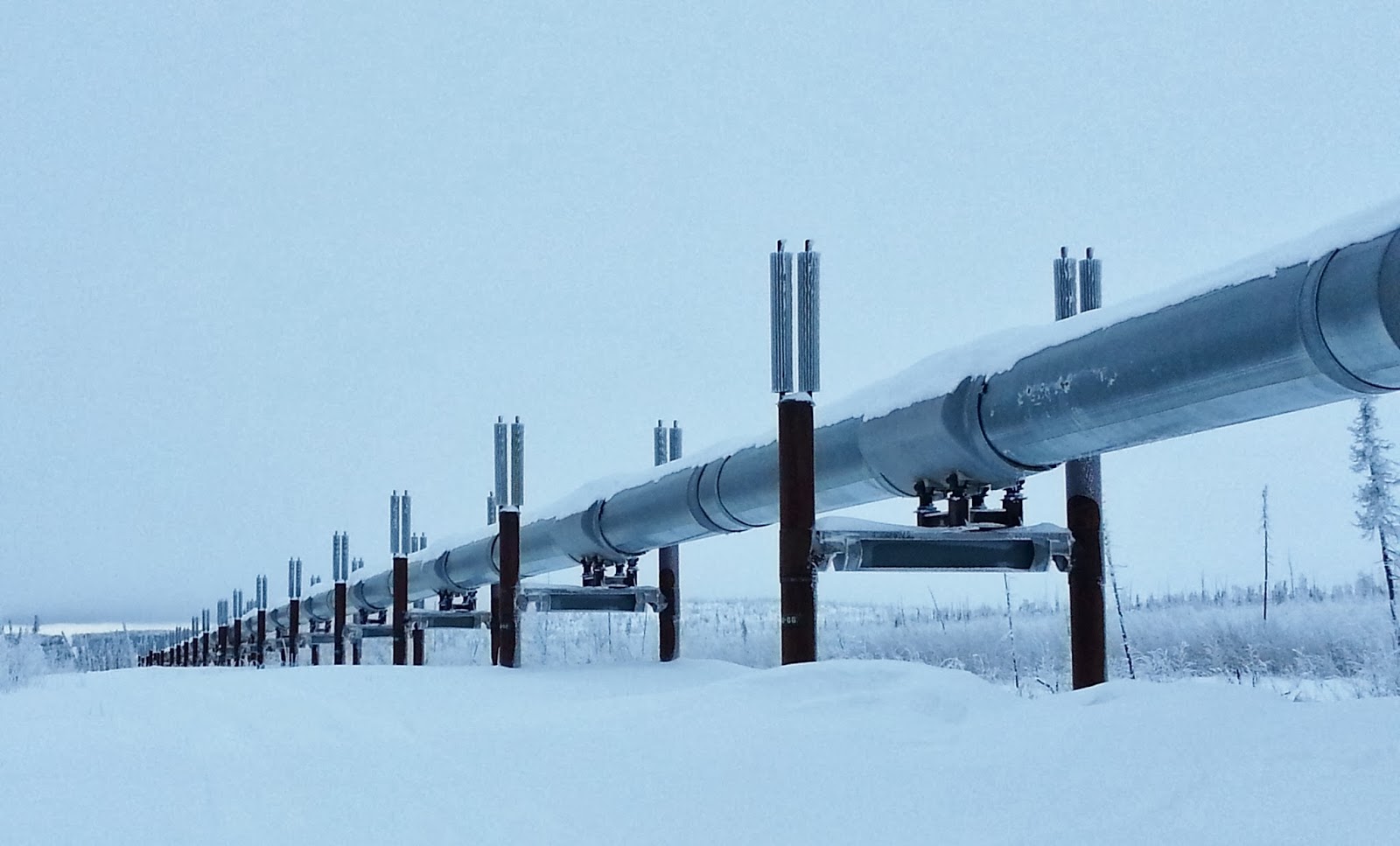Coldfoot Camp is located 260 miles from Fairbanks via the Dalton Highway.
The Dalton Highway is a 414 mile road made up of gravel and was originally built in 1974 to support the Alaskan Pipeline(it follows along the pipeline). I encourage you to click on the link because it has a lot of cool facts. There are only 3 inhabited towns during the entire trip-Coldfoot, Wiseman, and Deadhorse. On another note, the flower on both sides of the sign is called a Fireweed. It's name comes from the fact that it's the first thing to sprout up after there has
been a forest fire.
been a forest fire.
To get there we took a small van. That's our tour guide Rachel at the door of the van, she was super knowledgeable about everything Alaskan!!
Our first stop was what once used to be an old trading post.
These were the last decent outhouses along our entire trip. Notice the Tibetan Monk in the center: a group of 47 people from Thailand were also headed up to Coldfoot camp at the same time as us. More on them later!
Rachel told us that seeing cars piled up on peoples property in Alaska is a common site. Once a car breaks down, it's costs a good amount of money to get rid of it. Also since most parts of Alaska are so remote, they keep the cars
as "spare parts."
as "spare parts."
How dogs travel in Alaska.
The Trans-Alaska Pipeline. Built between 1974 to 1977 it stretches 800 miles long, 48 inches in diameter and brings oil from Prudhoe Bay to Valdez, Alaska. The Dalton Highway was created solely for the purpose to bring supplies up to create the pipeline. It follows along the highway almost the entire trip, dipping underground at some points. There are 12 pumping stations along the entire line which help maintain the oil going through the pipeline. The inside of the pipeline is maintained by putting two different types of Pigs inside. A Dumb Pig removes wax that builds up due to the cold. A Smart Pig travels the line looking for corrosion using magnetic or ultrasonic sensors. At some point, the oil will dry up. The Alyeska Pipeline Service, which was founded to design, construct, operate, and maintain the line, is required by law to remove all traces of the pipeline once
oil extraction is complete.
oil extraction is complete.
One of the hardest parts about building the pipeline was dealing with Permafrost. Permafrost is soil that is below the freezing point(0 C or 32 F) for more then 2 years. Once the pipeline was in, they added heat pipes(the things on the top left of the pictures that look like car wash brushes) to help to keep the ground frozen essentially keeping permafrost. If the ground starts to thaw and become unstable it will cause the pipeline to move which is not good!
Snow just doesn't fall in Alaska, it also grows! Above is a picture of snow that had covered a piece of fence next to the pipeline. Snow crystals had started to form on top of the snow almost like moss covering a rock! This link tells you how snow forms which is pretty cool in itself! Yeah science!!
I threw this shot in because it reminded me of Frodo and Sam(Lord of the Rings) trying to get to Mordor!
Finally after about 7 hours of driving we arrived at the Arctic Circle!
Snow just doesn't fall in Alaska, it also grows! Above is a picture of snow that had covered a piece of fence next to the pipeline. Snow crystals had started to form on top of the snow almost like moss covering a rock! This link tells you how snow forms which is pretty cool in itself! Yeah science!!
I threw this shot in because it reminded me of Frodo and Sam(Lord of the Rings) trying to get to Mordor!
This is the bridge that crosses the Yukon River along the Dalton Highway. The river starts in British Columbia, Canada and ends in Alaska(see map below). There are only 4 vehicle-carrying bridges that cross the river during it's entire course. Remember I said that the pipeline follows the highway........well the pipeline is INSIDE the bridge!!
Finally after about 7 hours of driving we arrived at the Arctic Circle!




















No comments:
Post a Comment